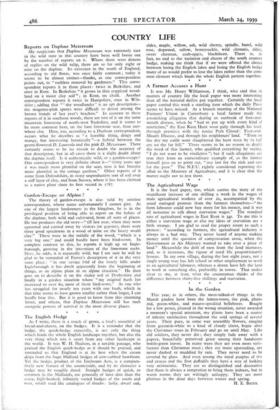COUNTRY LIFE
Reports on Daphne Mezereum My suspicions that Daphne Mezereum was extremely rare in the wild state in this country have been well borne out by the number of reports on it. Where there were dozens of replies on the wild tulip, there are so far only eight or nine on the daphne. Its existence in the south of England, according to old floras, was once fairly common ; today it seems to be almost extinct—thanks, as one correspondent points out, to "ruthless removal by gardeners." This corre- spondent reports it in three places : twice in Berkshire, and once in Kent. In Berkshire "it grows in thin coppiced wood- land on a moist clay soil " ; in Kent, on chalk. Another correspondent reports it twice in Hampshire, once in Wilt- shire ; adding that " ' shy woodlander ' is an apt description— the magenta-pink sprays were difficult to detect among the brown fronds of last year's bracken." In contrast to these reports of it in southern woods, there are two of it on the same mountain limestone of north-west Yorkshire, and it seems to be more common here, on the bare limestone scar, than any- where else. Here, too, according to a Durham correspondent, occurs what he decribes as "a horrible thing, dingy and mangy, but interesting botanically "—a hybrid between the green-flowered D. Laureola and the pink D. Mezereum. There certainly seems to be no reason to doubt the accuracy of that description, but in all cases there is a slight doubt about the daphne itself. Is it authentically wild, or a garden-escape? One correspondent is very definite about it—" thirty years ago it was much more plentiful on the scar, now it has become more plentiful in the cottage gardens." Other reports of it come from Oxfordshire, in stony unproductive sort of soil over a stiff layer of clay, and from Sussex, where it has been claimed as a native plant since its first record in 1787.
* * * *














































 Previous page
Previous page